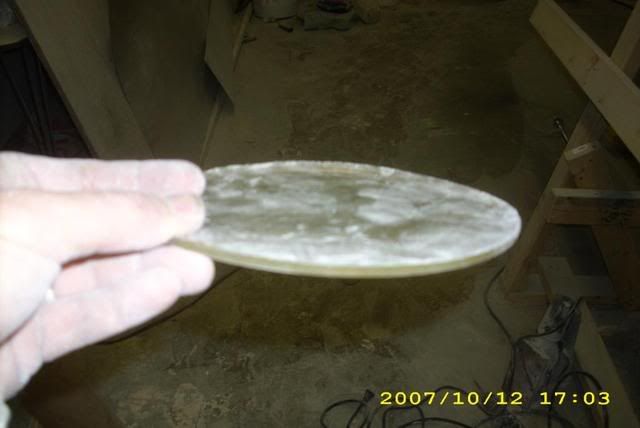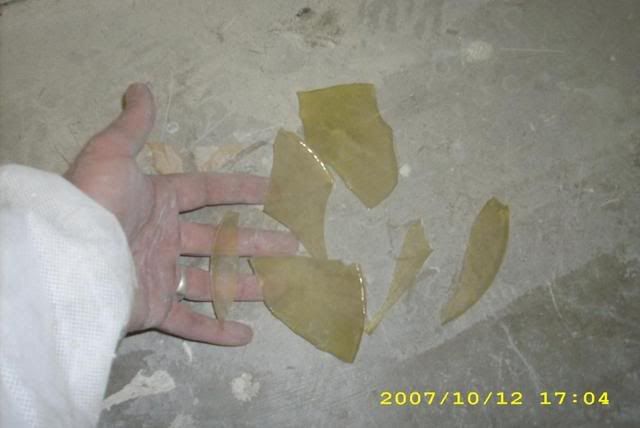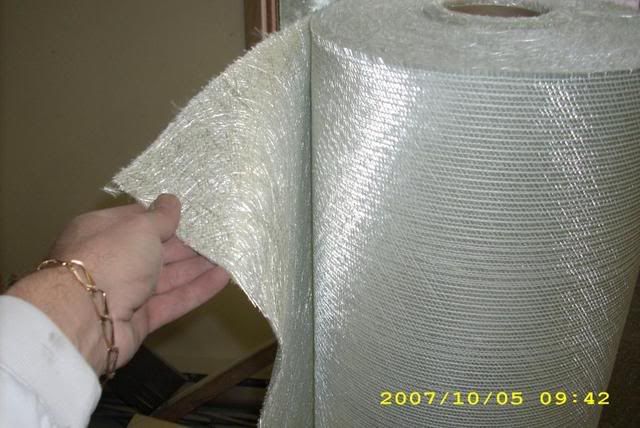Re: transom repair: fabric or no fabric?
glassing 101.
there are three main types of fiberglassing resin....(actually a lot more that that....but for this purpose...and saving my typing fingers....ill deal with the main three).
1. polyester resins.....
these were/are the backbone on the boat building iindustry. and this is what you are using.
2. vynalester resins.......until 1995 most boats were built with poly....after 1995 manufacturers went with vynalester resins to construct hulls.....it is stronger than poly....but still a member of that family.
3. epoxy resins.......these are more like glue than a glassing resin....they are very expensive, and not used in any mass production boats. but being that epoxy resins are far stronger than poly....some do it your self boat builders are choosing to use epoxy resins. epoxy is more often used on wooden boats, than fiberglass boats. theis is due to the superiority of the glue, and its higher waterproofing characteristics.
each of these resins needs an activator to make them hard....in the case of poly resins and VE resins.....the is a stuff called methel ethel keytone peroxide....or...MEKP for short.
the mekp is added to the resin at a ratio of 2% ....the actual window is between 1.5% and 2.5%....this allows you to mix colder during hotter days and hotter during the reverse...it will also allow you a longer working time using a colder mix.
the ideal glassing temp is 77 deg f.
waxed and unwaxed reisns....(poly and VE only)
air actually inhibits the cure of poly or ve resins.....so...pro builders actually add wax to the mixture of resin..at a ratio of 3% of the resin.(.wax for resin is sometimes called "airdry")..this wax will come to the surface during the cure of the resin and stop the air from stopping the cure of the resin....waxed resin will cure hard and not sticky to the touch after just an hour or so.
unwaxed resin will remain sticky to the touch for up to a week after the inital lamination....as the top layer of the resin isnt fully cured.
the thing about wax..... is that nothing will stick to it.....so if you are using a waxed resin.....you let it cure and try to glass over it the next day.....the new layer wont stick properly....the bond will fail......wax is a release agent for fiberglass resin.
if you use a waxed resin and need to glass over it.....you have to grind off the top layer of resin...get back to the fiberglass...so that you will have a good bond fotr the next layer.
but....you are using polyester resins....so lets look at those...and how to use them.
poly resins are weak by them selves....very brittle
this is a picture of a poly reisn casting...it was left over in a bucket after i got done glassing.
that is far more poly resin than will be in your glass/resin mixture
this is what happens to poly without fiberglass.
the stuff shatters like peanut brittle.
it is THE COMBINATION OF THE FIBERGLASS AND THE POLY RESIN that gives its strength. done properly....polyester resins and fiberglass is as strong as steel !
you just cannot resin coat a piece of wood and hope it will be water proofed. it wont be......the resin is brittle with out the fiberglass....so it will crack....and let water in the wood.
IT IS OF NO BENEFIT TO YOU TO JUST RESIN COAT ANY RAW WOOD. the poly resin, needs the fiberglass to become strong enough not to crack.
now that we have covered that......lets talk about the fiber glass it self.....
the workhorse of any fiberglass system is chopped strand matt.....
this is a picture of a hull being prepared for a transom installation with chopped strand matt....(sorry i dont have any pics of chop strand matt...its so common that is didnt take any pictures of it)
the next type you have ia a woven roving.....(dont have any pics of that either..cause i dont use that stuff....i use a different fabric called 1708. three of these and its as thick and strong as a boat hull.
its chopped strand matt on one side and a woven fabric on the other side....but the weave is at a different angle that will allow a stronger cloth in many different directions than a standard woven.....the stregnth in a woven is along the longer weaves of the fabric.....this means there is little 45 degree shear stregnth.
ok......now that we know about fiberglass fresins......and fiberglass cloth...or fabric...
we can deal with what you have and how this applies to you
as you saturate your transom with resin.....we know that will not work because the resin is brittle and it will crack alone....it needs the fiber glass to remain strong and not crack.
but....we cannot just lay down a layer of thick woven roving (what you have) because we know that resin by it self is weak.....and if you look closely at the woven.... imagine that fabric laying on a piece of plywood....see all the pockets between the weave of the fabric?.....well....that creates a resin rich layer between the sub-straight and the fabric. and as we know.....the resin is brittle......this means you will have a bond to the wood that will break away...(de laminate) and thats bad.
in fact...if you took a pair of plyers after the woven is cured to the plywood sub-straight.....you could very easily pull it away from the wood !!!
so....what do we do?????? we cant use the woven frabric alone.....what do we use between the plywood sub-straight and the woven????
enter the chopped strand matt.....or csm.
this stuff is what most early boats were made of.
the chopped strand matt.....is a bunch of 3 inch long strands of glass....we call it fiberglass.....that is bonded togeather by a bonding agent that breaks down in styrene. (styrene is in poly resin)
when you add polyester resin to csm...after about 15 seconds....it gets all mushy....and can go in corners easily....and can be worked in just about any fashion and is very strong.
so......when you use poly resin ...you MUST use chopped strand matt first....(csm) then....you can lay your woven roving over the csm as the next layer.....but each additional layer of roving fabric....still needs the chopped strand matt between each layer.....
you can glass more than one layer at a time....up to three layers of csm and woven each.....so csm....woven...csm....woven.....csm... woven.....
each time you add more glass...pour more resin over the glass.....and use your resin roller to get out any air in the resin.....if you get air under the csm or the woven...you have to get the air out.....because....there is in strength in air.....so you have no bond there.......so no air......
ill also add at this time...you are going to get air in there....dont get too anal about the air....but dont let too much get in there....if there is more than 50 percent air.....you have to grind it off and re glass it..because its only half bonded to the sub-straight . this is why glassing is sometimes called an "art". ...dont worry.....the average do it your selfer can achieve good to excellent results by following these instructions.
if you choose to add more layers of fabric or csm over top the last batch....then just waiut till most of the heat has gone out of the curing fiberglass before you add the next layers. you dont want the resin to get too hot....it will bake and become brittle again.
during the final layer of glassing with poly.....add wax to the resin......this will fully cure the resin....and add a further layer of waterproofing to the fiberglass laminate.
ok.....my brain is numb, and my two typeing fingers are sore......so im going to leave it at that for now.....
just remember.....resin alone does nothing.....you need csm between the plywood and the roving.... roll the air out and add wax to the final layer....and you will be fine.
i hope this helps you.
cheers
oops
























